Alberta
Alberta ( al-BUR-tə) is one of the thirteen provinces and territories of Canada. It is a part of Western Canada and is one of the three prairie provinces. Alberta borders British Columbia to the west, Saskatchewan to the east, the Northwest Territories to the north, and the U.S. state of Montana to the south. It is one of the only two landlocked provinces in Canada, with Saskatchewan being the other. The eastern part of the province is occupied by the Great Plains, while the western part borders the Rocky Mountains. The province has a predominantly continental climate but experiences quick temperature changes due to air aridity. Seasonal temperature swings are less pronounced in western Alberta due to occasional Chinook winds.
Alberta is the fourth largest province by area at 661,848 square kilometres (255,541 square miles), and the fourth most populous, being home t...Read more
Alberta ( al-BUR-tə) is one of the thirteen provinces and territories of Canada. It is a part of Western Canada and is one of the three prairie provinces. Alberta borders British Columbia to the west, Saskatchewan to the east, the Northwest Territories to the north, and the U.S. state of Montana to the south. It is one of the only two landlocked provinces in Canada, with Saskatchewan being the other. The eastern part of the province is occupied by the Great Plains, while the western part borders the Rocky Mountains. The province has a predominantly continental climate but experiences quick temperature changes due to air aridity. Seasonal temperature swings are less pronounced in western Alberta due to occasional Chinook winds.
Alberta is the fourth largest province by area at 661,848 square kilometres (255,541 square miles), and the fourth most populous, being home to 4,262,635 people. Alberta's capital is Edmonton, while Calgary is its largest city. The two are Alberta's largest census metropolitan areas. More than half of Albertans live in either Edmonton or Calgary, which contributes to continuing the rivalry between the two cities. English is the official language of the province. In 2016, 76.0% of Albertans were anglophone, 1.8% were francophone and 22.2% were allophone.
Alberta's economy is based on hydrocarbons, petrochemical industries, livestock and agriculture. The oil and gas industry has been a pillar of Alberta's economy since 1947, when substantial oil deposits were discovered at Leduc No. 1 well. It has also become a part of the province's identity. Since Alberta is the province most rich in hydrocarbons, it provides 70% of the oil and natural gas produced on Canadian soil. In 2018, Alberta's output was CA$338.2 billion, 15.27% of Canada's GDP.
Until the 1930s, Alberta's political landscape consisted of 2 major parties: the centre-left Liberals and the agrarian United Farmers of Alberta. Today, Alberta is generally perceived as a conservative province. The right-wing Social Credit Party held office continually from 1935 to 1971 before the centre-right Progressive Conservatives held office continually from 1971 to 2015, the latter being the longest unbroken run in government at the provincial or federal level in Canadian history.
Since before becoming part of Canada, Alberta has been home to several First Nations like Plains Indians and Woodland Cree. It was also a territory used by fur traders of the rival companies Hudson's Bay Company and North West Company. The Dominion of Canada bought the lands that would become Alberta as part of the NWT in 1870. From the late 1800s to early 1900s, many immigrants arrived to prevent the prairies from being annexed by the US. Growing wheat and cattle ranching also became very profitable. In 1905, the Alberta Act was passed, creating the province of Alberta. Massive oil reserves were discovered in 1947. The exploitation of oil sands began in 1967.
Alberta is renowned for its natural beauty, richness in fossils and for housing important nature reserves. Alberta is home to six UNESCO designated World Heritage Sites: the Canadian Rocky Mountain Parks, Dinosaur Provincial Park, Head-Smashed-In Buffalo Jump, Waterton-Glacier International Peace Park, Wood Buffalo National Park and Writing-on-Stone Provincial Park. Other popular sites include Banff National Park, Elk Island National Park, Jasper National Park, Waterton Lakes National Park, and Drumheller.
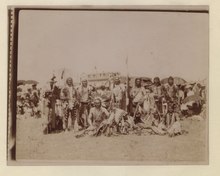 Blackfoot Confederacy warriors in Macleod in 1907
Blackfoot Confederacy warriors in Macleod in 1907Paleo-Indians arrived in Alberta at least 10,000 years ago, toward the end of the last ice age. They are thought to have migrated from Siberia to Alaska on a land bridge across the Bering Strait and then possibly moved down the east side of the Rocky Mountains through Alberta to settle the Americas. Others may have migrated down the coast of British Columbia and then moved inland.[1] Over time they differentiated into various First Nations peoples, including the Plains Indians of southern Alberta such as those of the Blackfoot Confederacy and the Plains Cree, who generally lived by hunting buffalo, and the more northerly tribes such as the Woodland Cree and Chipewyan who hunted, trapped, and fished for a living.[2]
The first Europeans to visit Alberta were French Canadians during the late 18th century, working as fur traders. French was the predominant language used in some early fur trading forts in the region, such as the first Fort Edmonton (in present-day Fort Saskatchewan). After the British arrival in Canada, approximately half of the province of Alberta, south of the Athabasca River drainage, became part of Rupert's Land which consisted of all land drained by rivers flowing into Hudson Bay. This area was granted by Charles II of England to the Hudson's Bay Company (HBC) in 1670, and rival fur trading companies were not allowed to trade in it.
The Athabasca River and the rivers north of it were not in HBC territory because they drained into the Arctic Ocean instead of Hudson Bay, and they were prime habitats for fur-bearing animals. The first European explorer of the Athabasca region was Peter Pond, who learned of the Methye Portage, which allowed travel from southern rivers into the rivers north of Rupert's Land. Other North American fur traders formed the North West Company (NWC) of Montreal to compete with the HBC in 1779. The NWC occupied the northern part of Alberta territory. Peter Pond built Fort Athabasca on Lac la Biche in 1778. Roderick Mackenzie built Fort Chipewyan on Lake Athabasca ten years later in 1788. His cousin, Sir Alexander Mackenzie, followed the North Saskatchewan River to its northernmost point near Edmonton, then setting northward on foot, trekked to the Athabasca River, which he followed to Lake Athabasca. It was there he discovered the mighty outflow river which bears his name—the Mackenzie River—which he followed to its outlet in the Arctic Ocean. Returning to Lake Athabasca, he followed the Peace River upstream, eventually reaching the Pacific Ocean, and so he became the first European to cross the North American continent north of Mexico.[3]
The extreme southernmost portion of Alberta was part of the French (and Spanish) territory of Louisiana and was sold to the United States in 1803. In the Treaty of 1818, the portion of Louisiana north of the Forty-Ninth Parallel was ceded to Great Britain.[4]
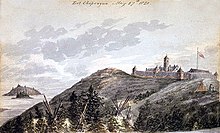 Fort Chipewyan, a trading post and regional headquarters for the Hudson's Bay Company in 1820
Fort Chipewyan, a trading post and regional headquarters for the Hudson's Bay Company in 1820Fur trade expanded in the north, but bloody battles occurred between the rival HBC and NWC, and in 1821 the British government forced them to merge to stop the hostilities.[5] The amalgamated Hudson's Bay Company dominated trade in Alberta until 1870 when the newly formed Canadian Government purchased Rupert's Land. Northern Alberta was included in the North-Western Territory until 1870, when it and Rupert's land became Canada's North-West Territories.
 Downtown Calgary was one of several areas afflicted during the 2013 Alberta floods.
Downtown Calgary was one of several areas afflicted during the 2013 Alberta floods.First Nations negotiated the Numbered Treaties with the Crown in which the Crown gained title to the land that would later become Alberta, and the Crown committed to the ongoing support of the First Nations and guaranteed their hunting and fishing rights. The most significant treaties for Alberta are Treaty 6 (1876), Treaty 7 (1877) and Treaty 8 (1899).
The District of Alberta was created as part of the North-West Territories in 1882. As settlement increased, local representatives to the North-West Legislative Assembly were added. After a long campaign for autonomy, in 1905, the District of Alberta was enlarged and given provincial status, with the election of Alexander Cameron Rutherford as the first premier. Less than a decade later, the First World War presented special challenges to the new province as an extraordinary number of volunteers left relatively few workers to maintain services and production. Over 50% of Alberta's doctors volunteered for service overseas.[6]
On June 21, 2013, during the 2013 Alberta floods Alberta experienced heavy rainfall that triggered catastrophic flooding throughout much of the southern half of the province along the Bow, Elbow, Highwood and Oldman rivers and tributaries. A dozen municipalities in Southern Alberta declared local states of emergency on June 21 as water levels rose and numerous communities were placed under evacuation orders.[7]
In 2016, the Fort McMurray wildfire resulted in the largest fire evacuation of residents in Alberta's history, as more than 80,000 people were ordered to evacuate.[8][9]
Since 2020, Alberta has been affected by the COVID-19 pandemic.[10]
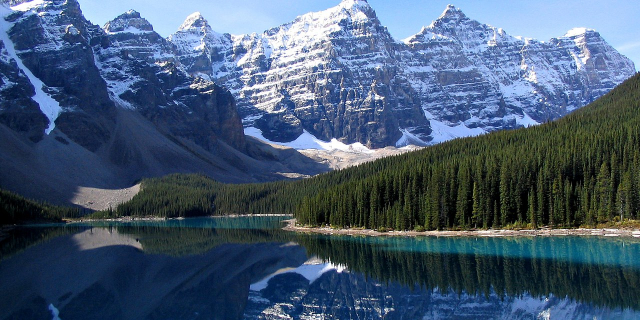







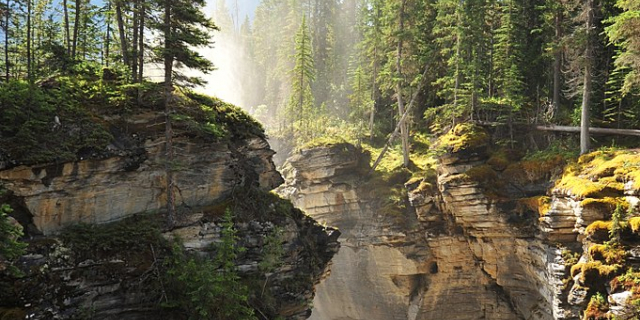




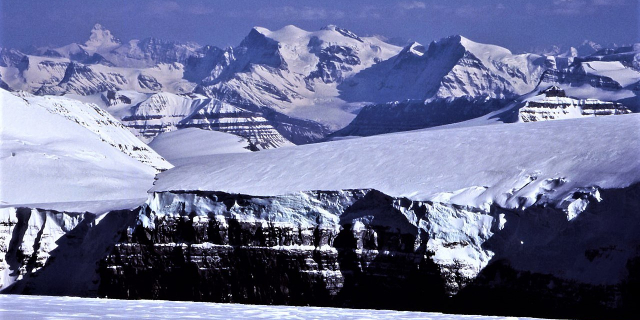
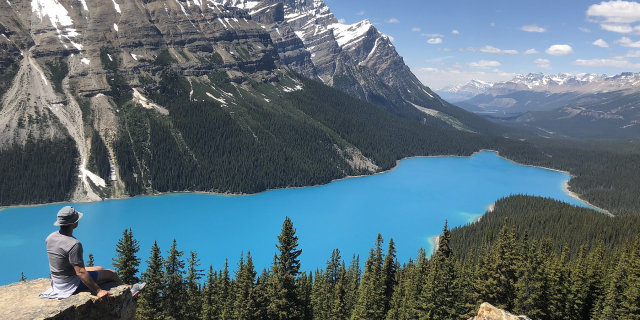

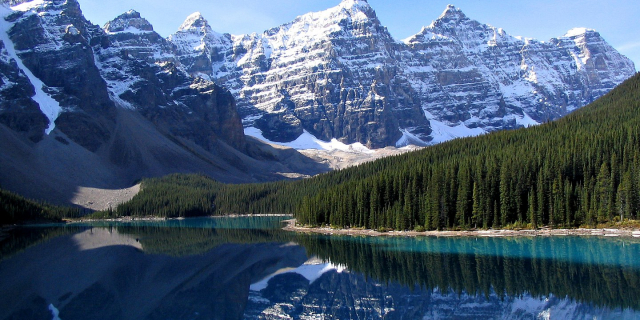


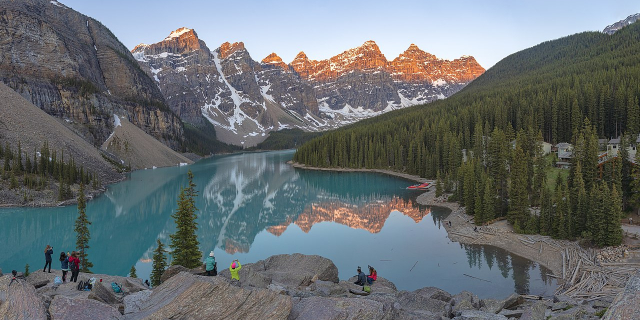
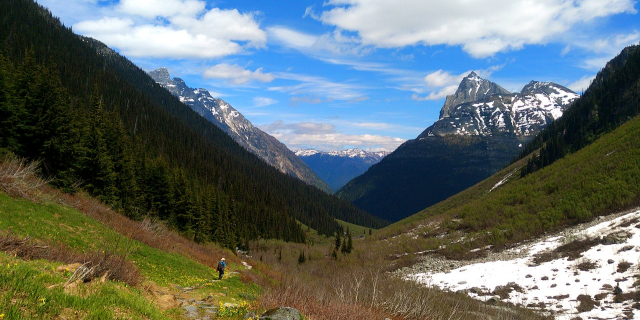
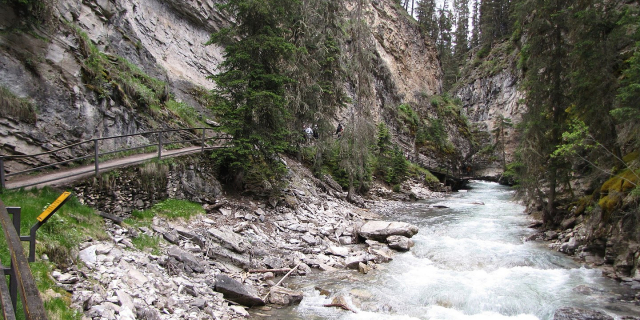

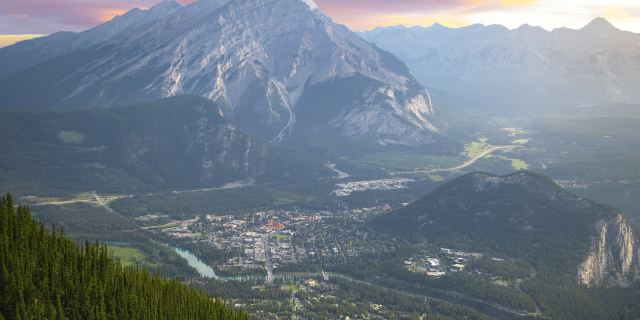


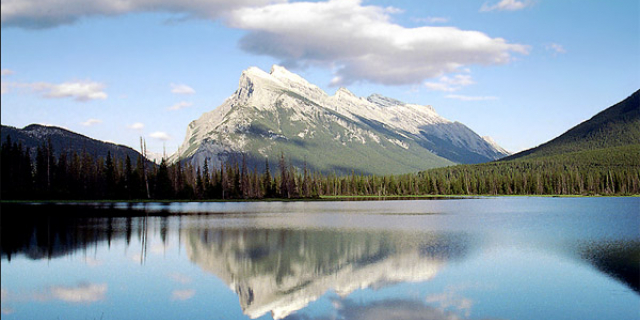

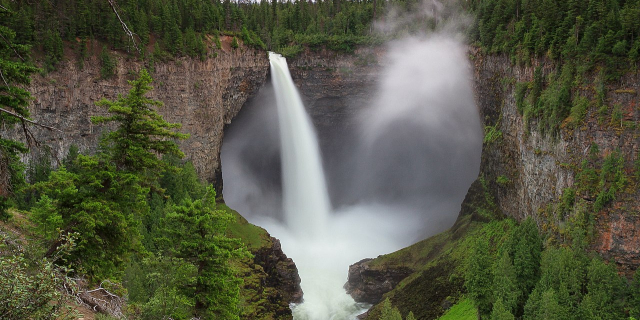
Add new comment